Summary of "Script&Shift: A Layered Interface Paradigm for Integrating Content Development and Rhetorical Strategy with LLM Writing Assistants"
The paper "Script&Shift: A Layered Interface Paradigm for Integrating Content Development and Rhetorical Strategy with LLM Writing Assistants" introduces Script, a new interface paradigm for writing with the assistance of LLMs. Script is designed to address the limitations of traditional writing tools by offering a layered, zoomable workspace. This workspace allows writers to seamlessly interleave content development and structural organization, facilitating a flexible interaction between micro-level text editing and macro-level rhetorical planning.
Script Architecture
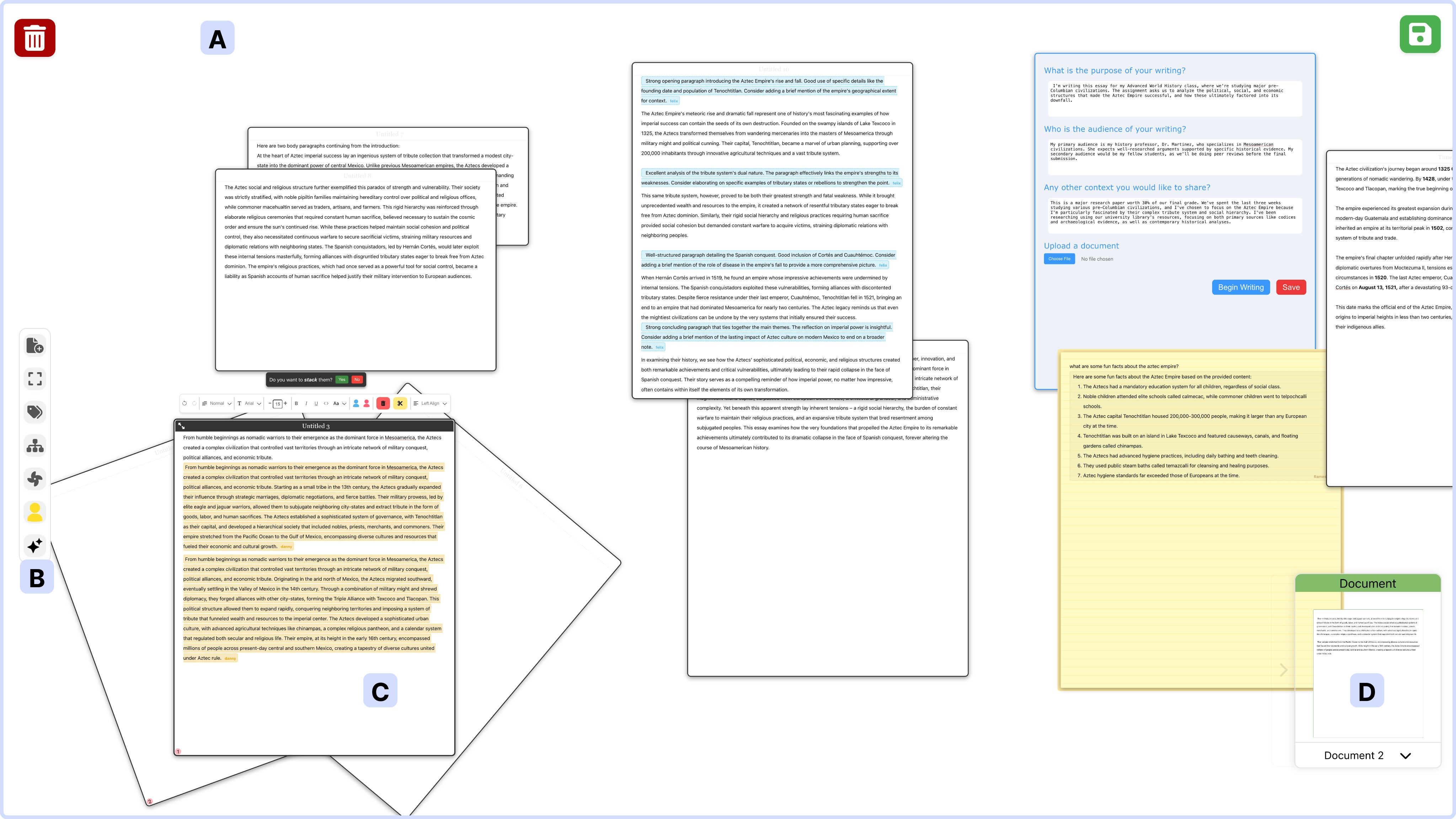
Figure 1: Workspace view of Script: (a) Zoomable, scrollable writing workspace, (b) workspace level operations, (c) a text layer with layer toolbar on top, and (d) the compiled document viewer.
Layer Primitives
Script introduces several types of layers to enhance the writing process:
- Writing Layer: This primary interface supports all content-related operations, including editing, interacting with AI assistants, and maintaining placeholder fields for LLM-generated text.
- Meta Layer: Acts as a foundational layer providing global context, such as writing goals and audience, which guides LLM inputs and outputs.
- Document Layer: Represents the final compiled content, preserving LLM contributions while maintaining structural integrity through non-editable formats.
Prompt Composer
The Prompt Composer is central to Script's functionality, coordinating interactions between users and the LLM. It consists of:
- System Prompts: Pre-defined prompts stored in a task knowledge dictionary for various writing tasks.
- Layer Templatizer: Identifies document locations for generated text based on the writing layer's context.
- LLM Orchestrator: Manages prompts, context, and base structures, ensuring coherent integration of user inputs with AI-generated outputs.
LLM
Script leverages the Claude 3.5 Sonnet model by Anthropic, chosen for its robust language comprehension and capacity for creative output generation.
Workspace Manager
Includes:
- Layer Handler: Oversees structural integrity and operations like stacking and fanning layers.
- LLM Broadcaster: Manages distribution of AI-generated content across layers, ensuring seamless integration into the writing process.
Use Scenarios
Script supports diverse writing workflows, including freewriting, document-based question (DBQ) writing, and parallel topic development. Each workflow benefits from Script's ability to transition effortlessly between drafting, editing, and structural organization, facilitated by AI tools and spatial content management.
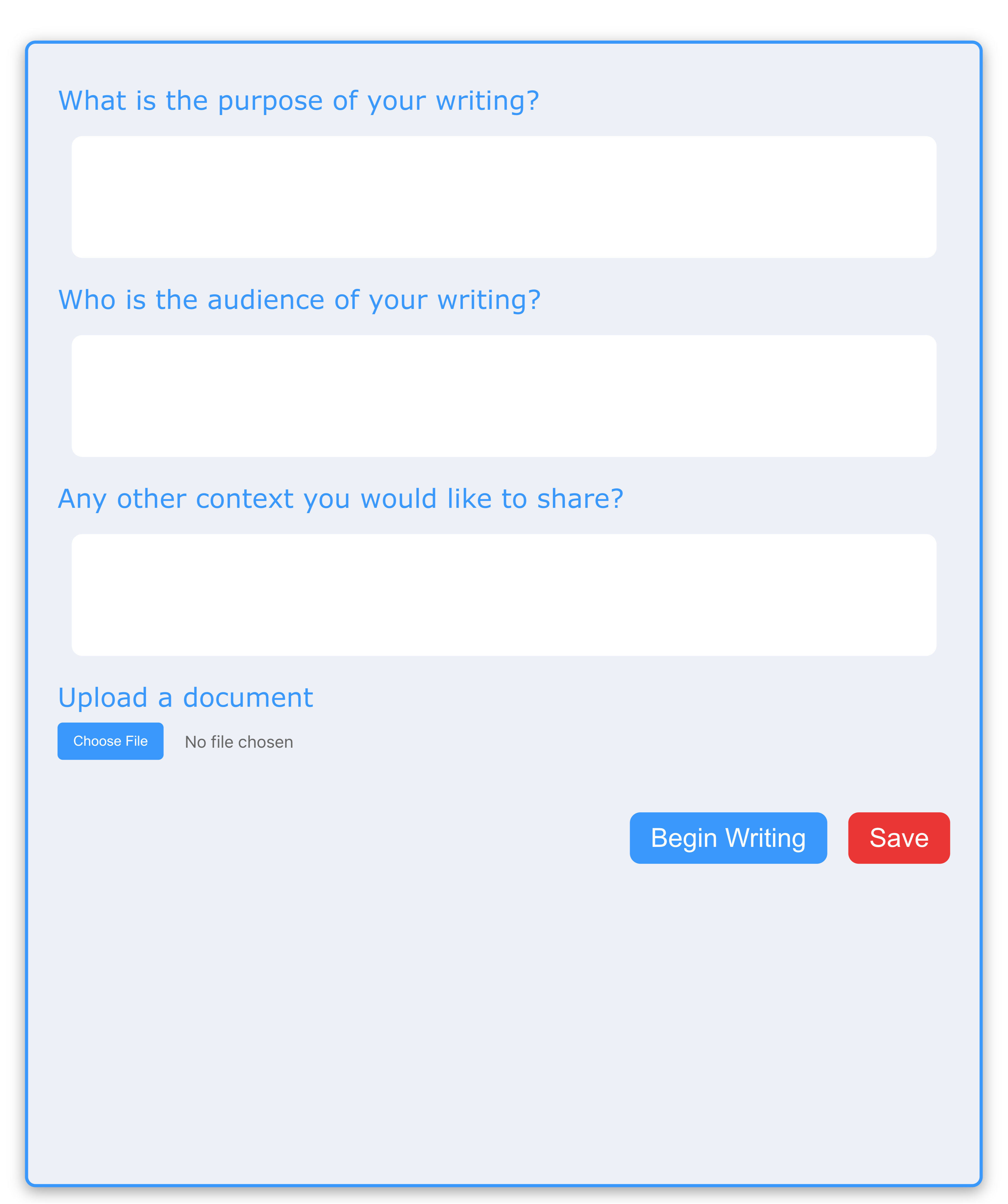
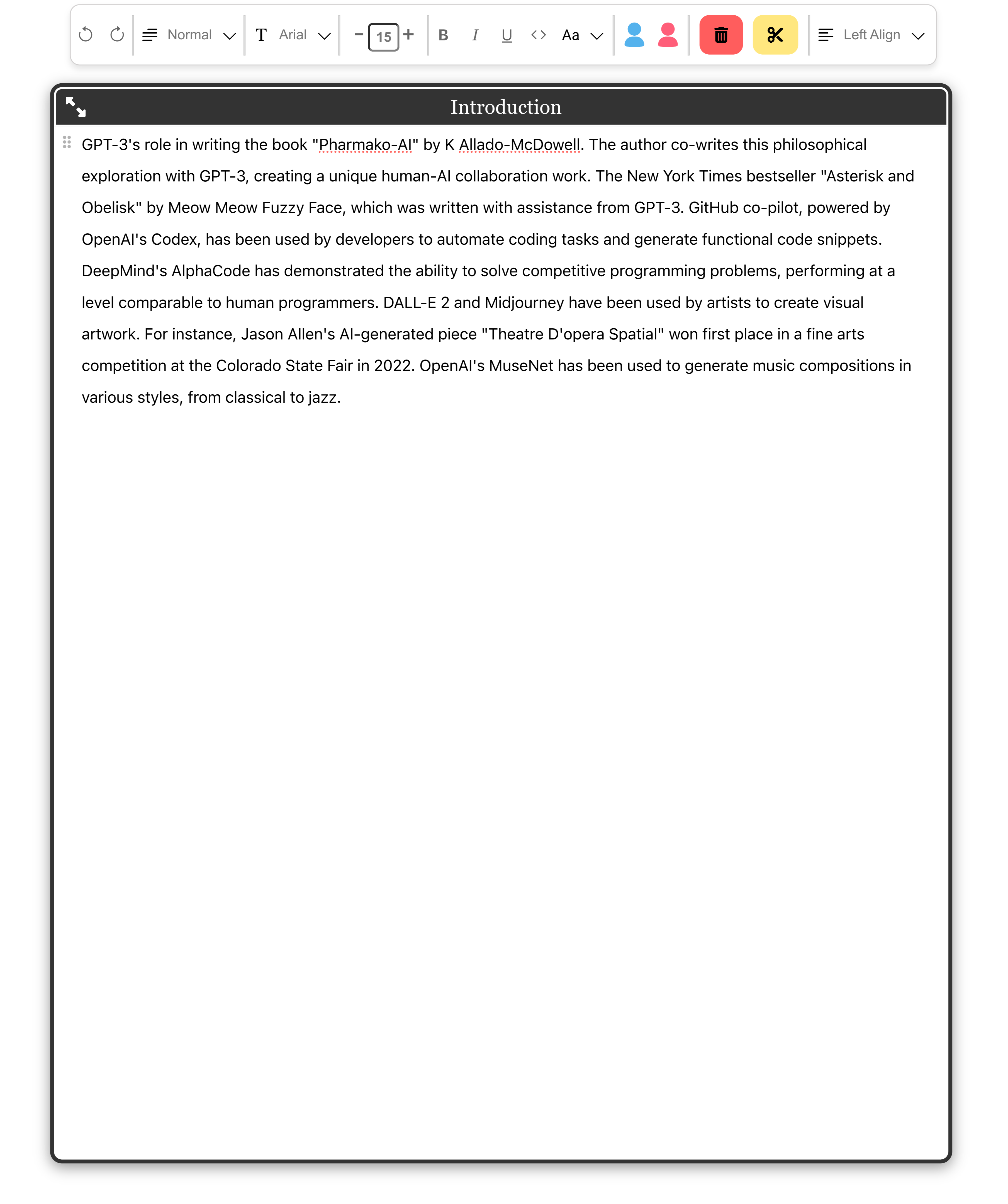
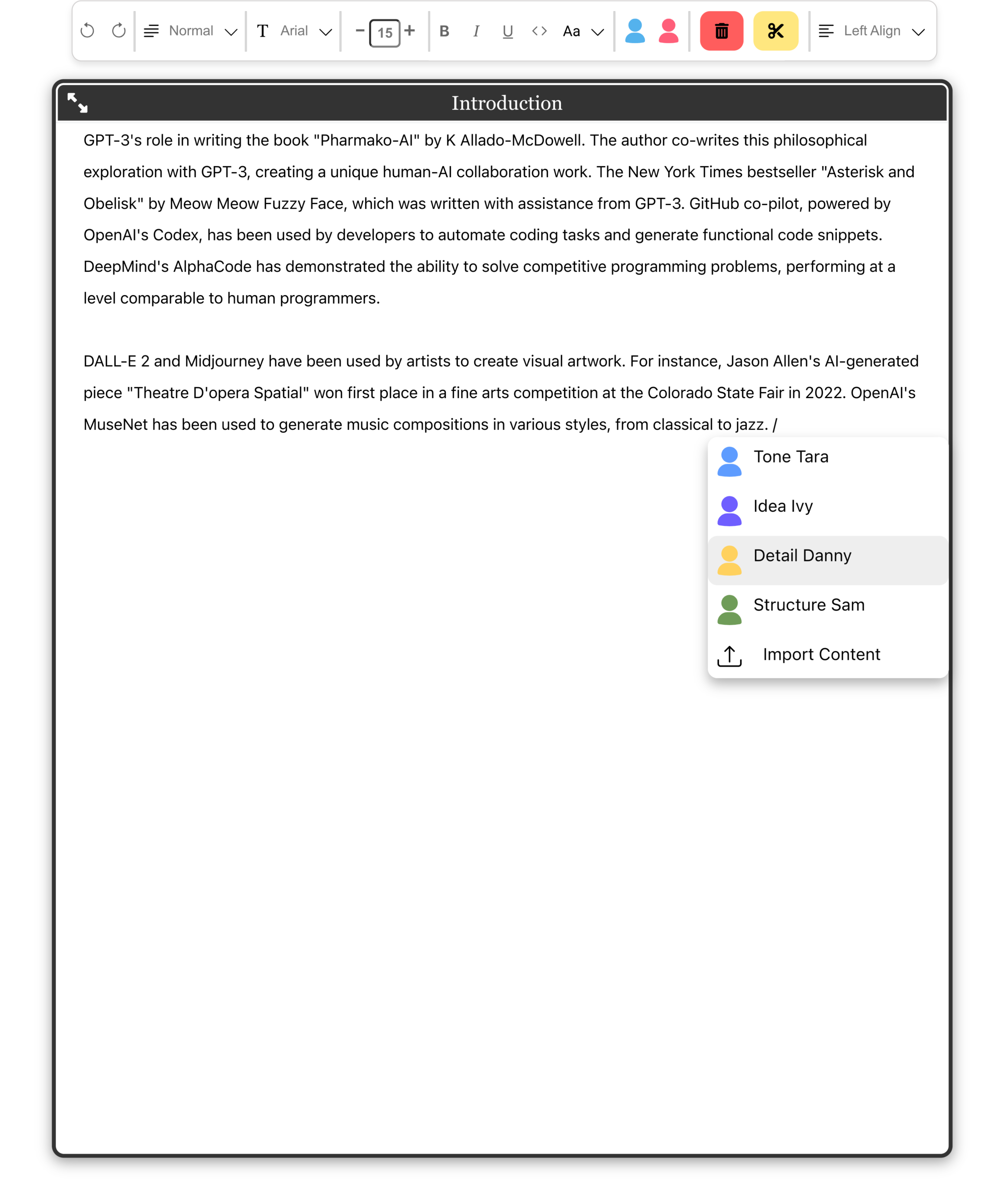
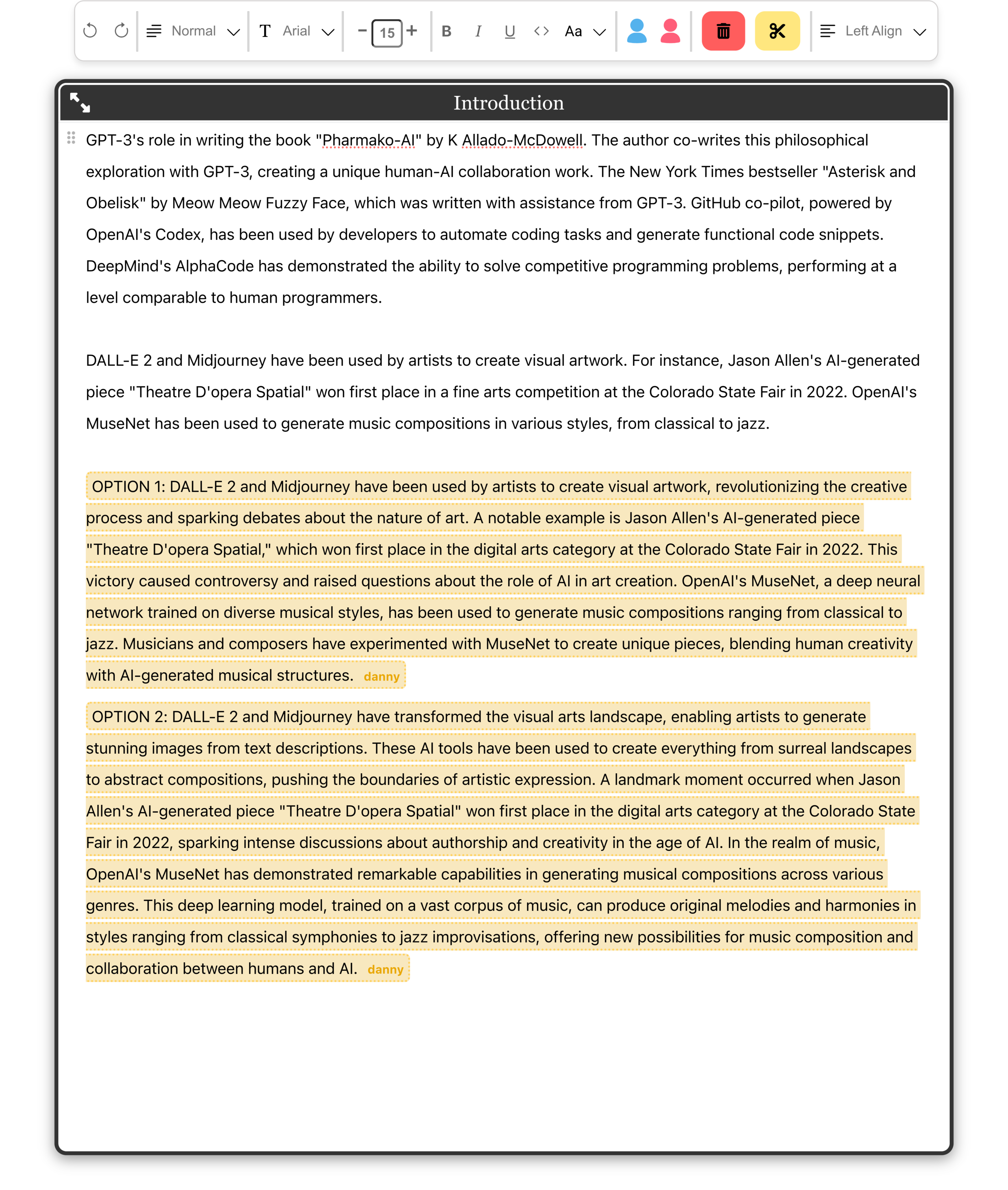
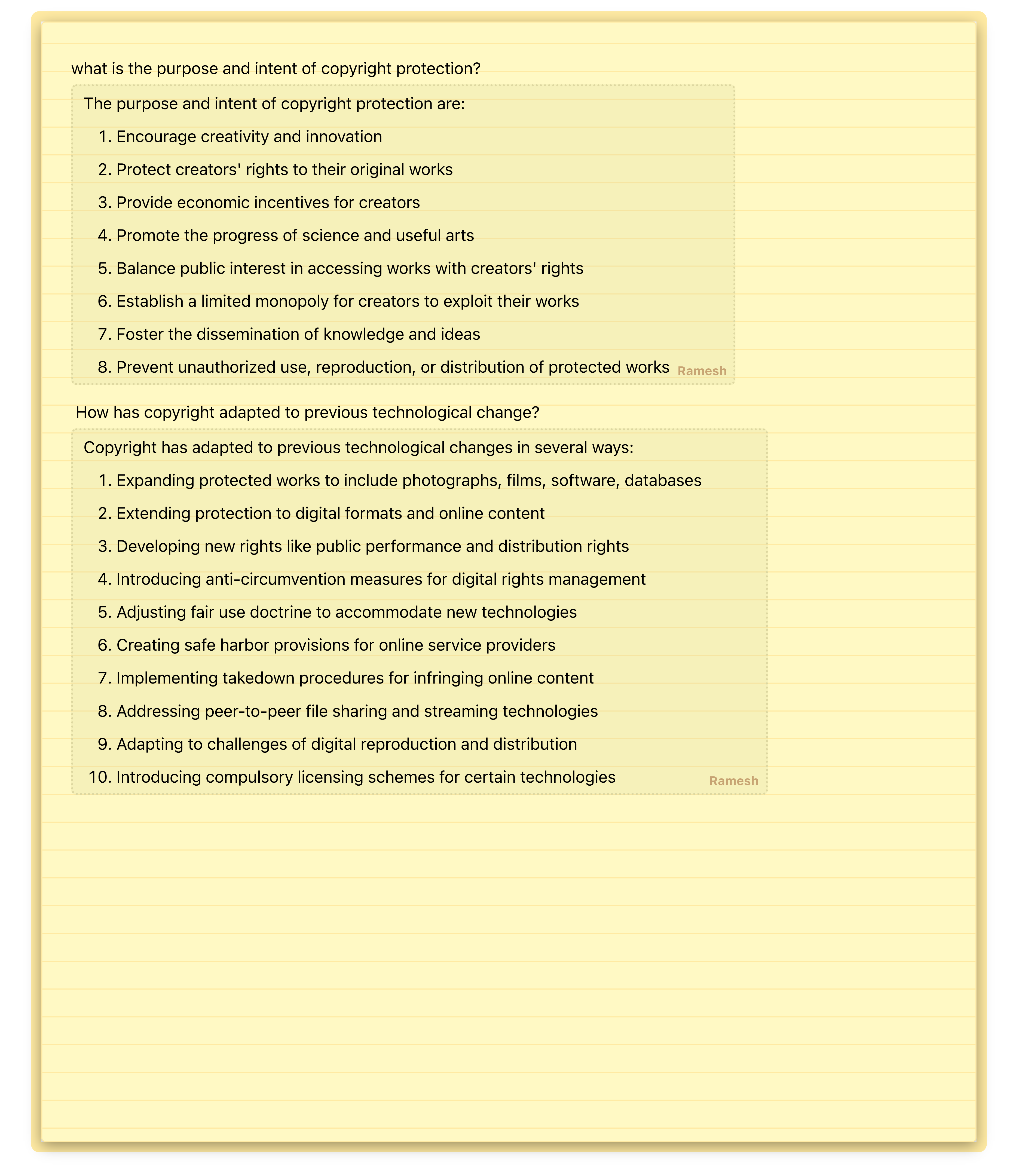
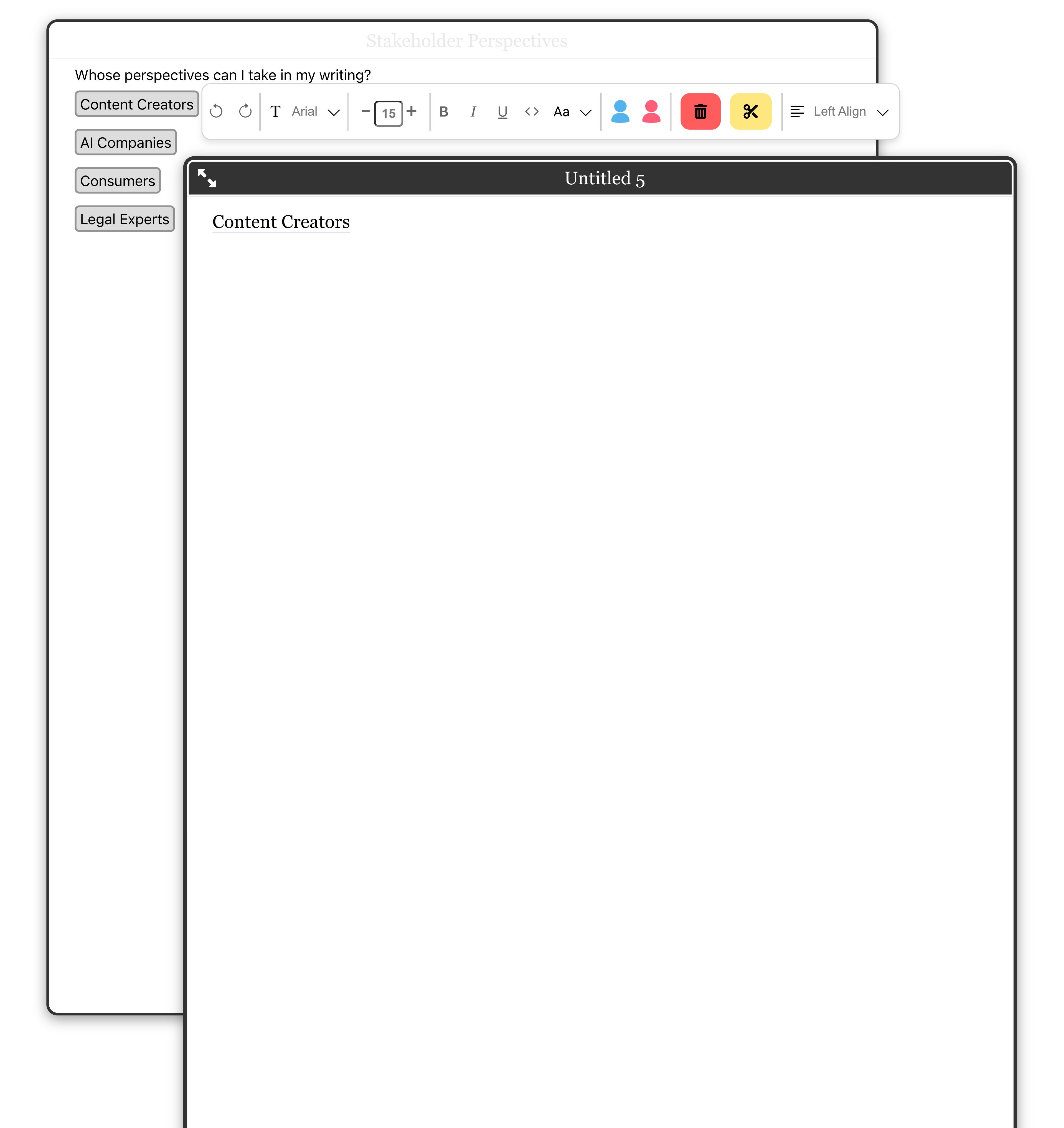
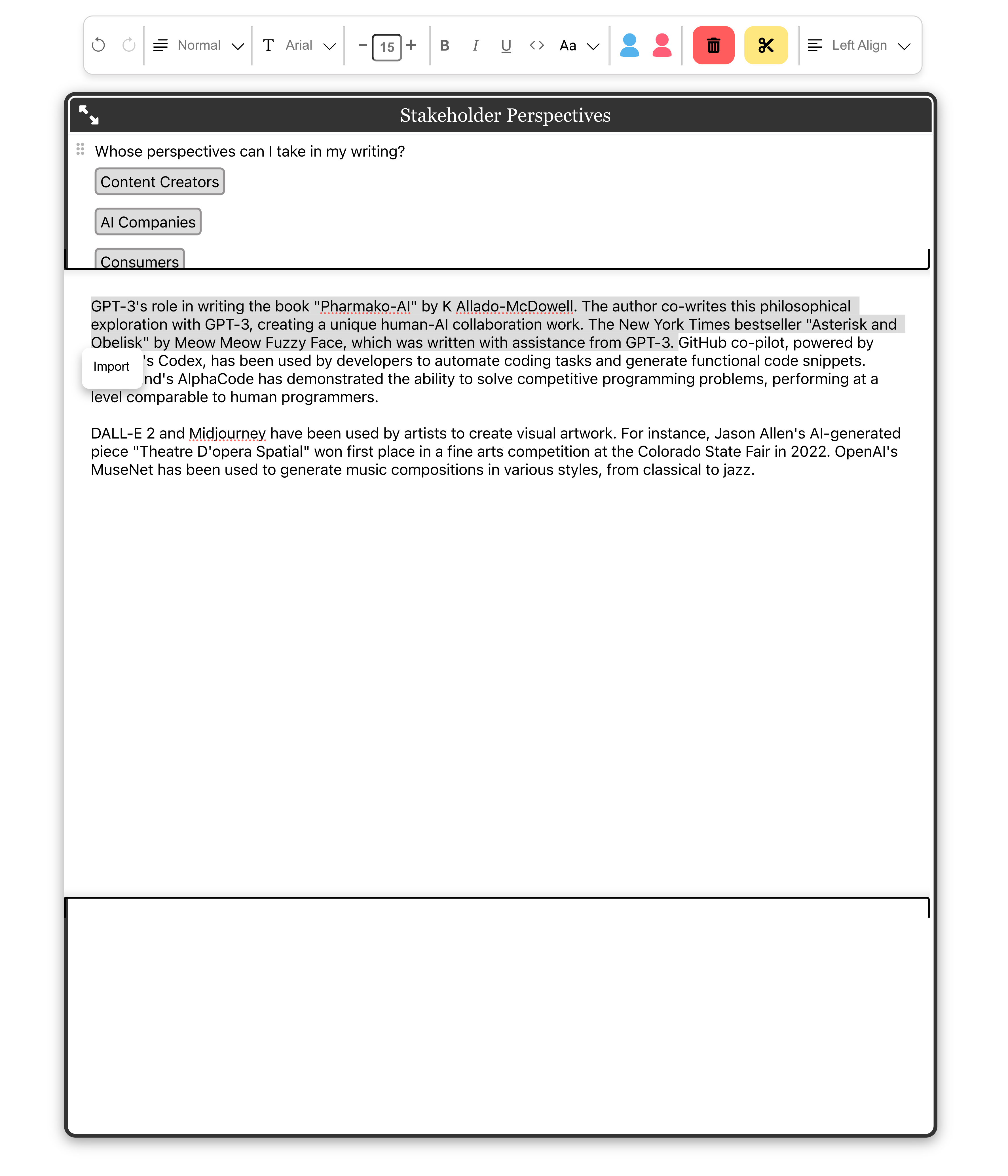
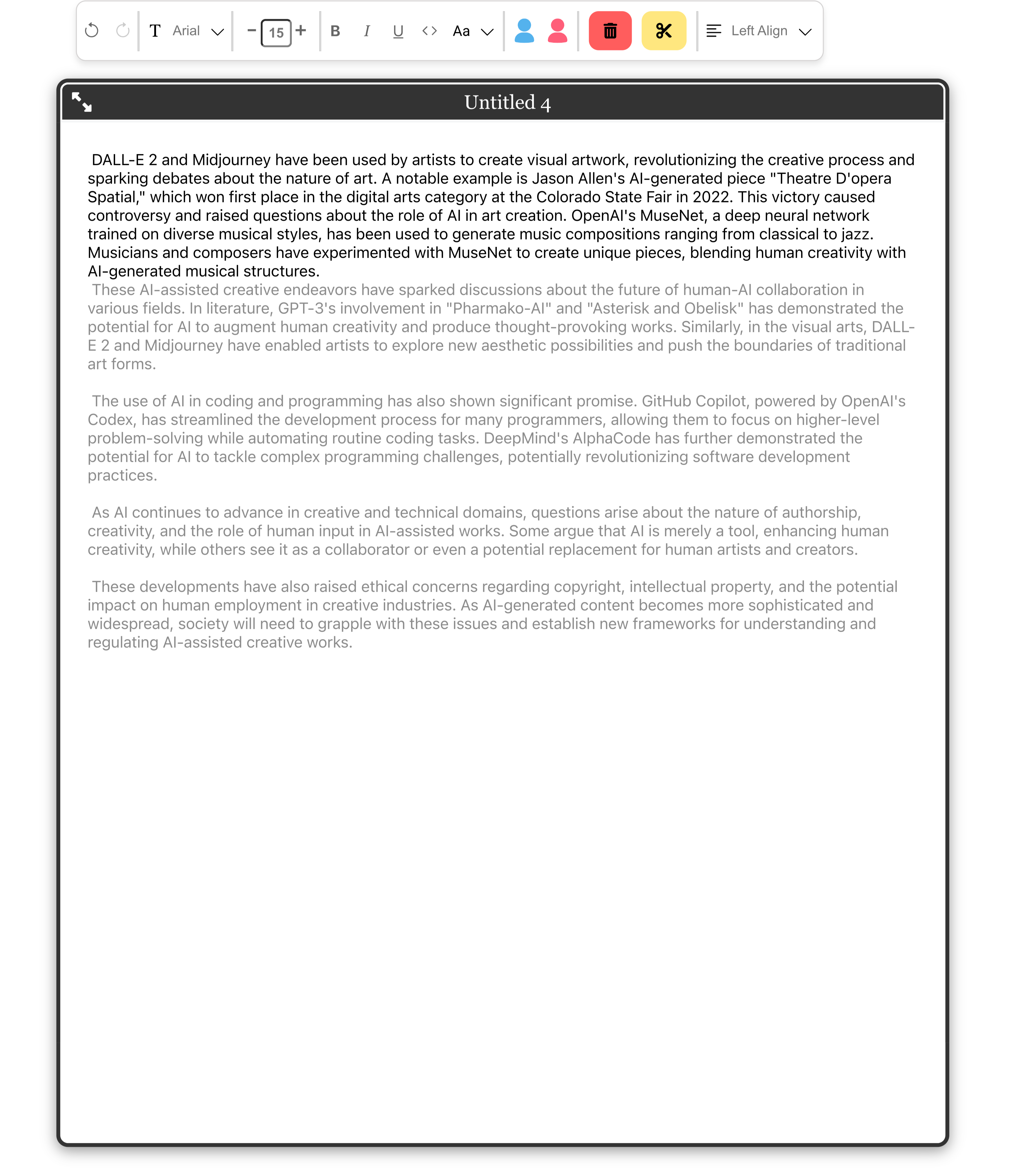
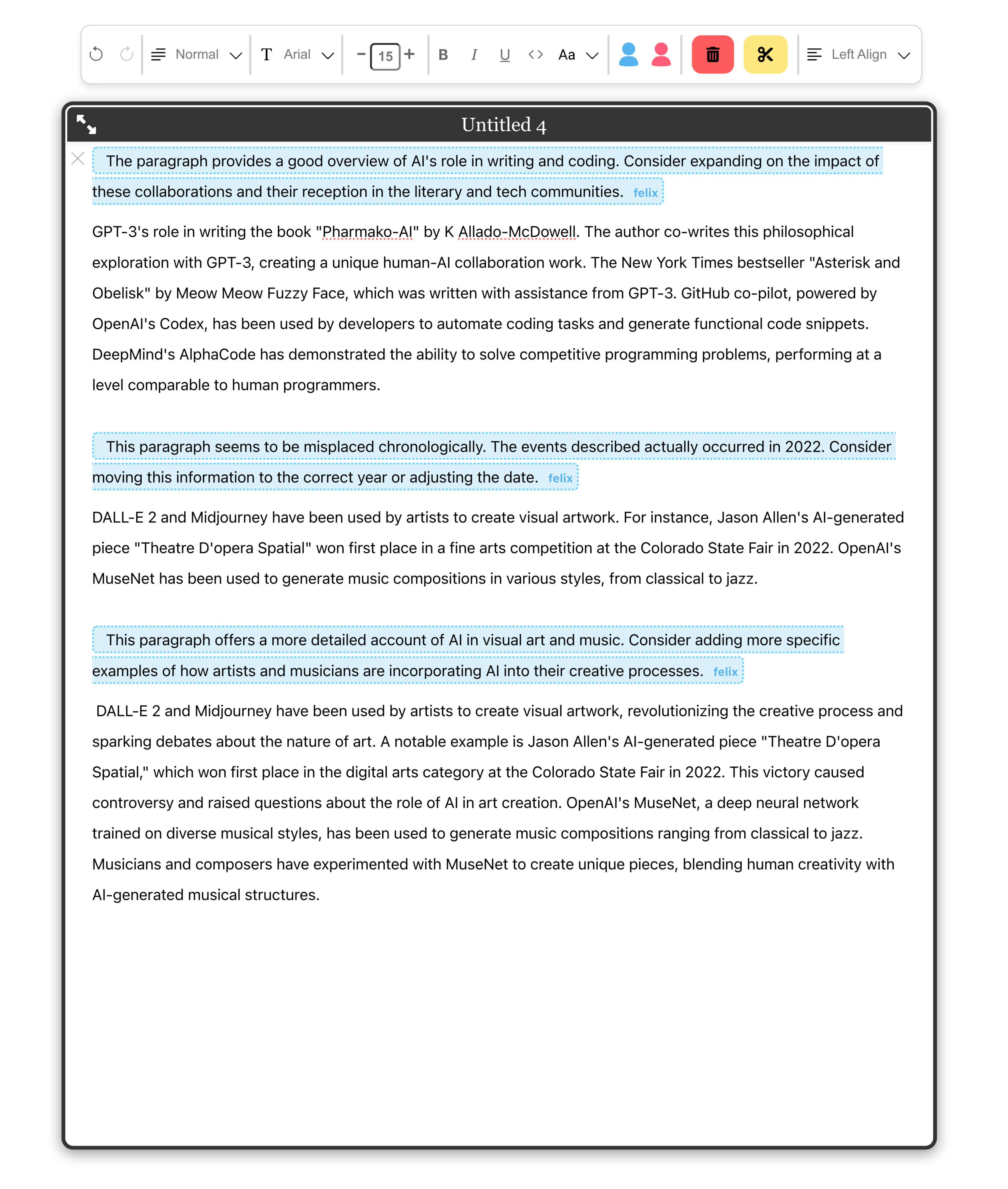
Figure 2: Specifying context of writing in meta layer.
Evaluation
The usability evaluation showed that Script enhances cognitive load management, usability, and creative output. Participants appreciated the seamless integration of Writer's Friends and the freedom to experiment with non-destructive editing options. Moreover, Script's layered interface, metaphorically akin to a desk with papers, was perceived as intuitive and conducive to exploratory writing.

Figure 3: Content transformation through user prompts. The following 10 features allow writers to issue descriptive instructions for invoking specialized LLM assistance. The example column consists of real prompts issued by participants in the usability assessment.
Implications and Future Work
Script's layered paradigm and AI tools support non-linear and divergent writing processes, aligning with natural cognitive workflows. Its broader utility extends to educational contexts, media production, policy development, and more, highlighting the importance of spatial organization in writing interfaces. Future work could explore improving user onboarding, enhancing AI output tailoring, and addressing possible LLM biases.
Conclusion
Script represents an advancement in writing technologies, supporting dynamic and iterative writing practices. It empowers users to manage content development and rhetorical strategies flexibly, thus promoting creativity and efficiency in the writing process. The integration of LLMs with structured, layered interactions provides an innovative approach that could reshape the future of digital writing tools.










